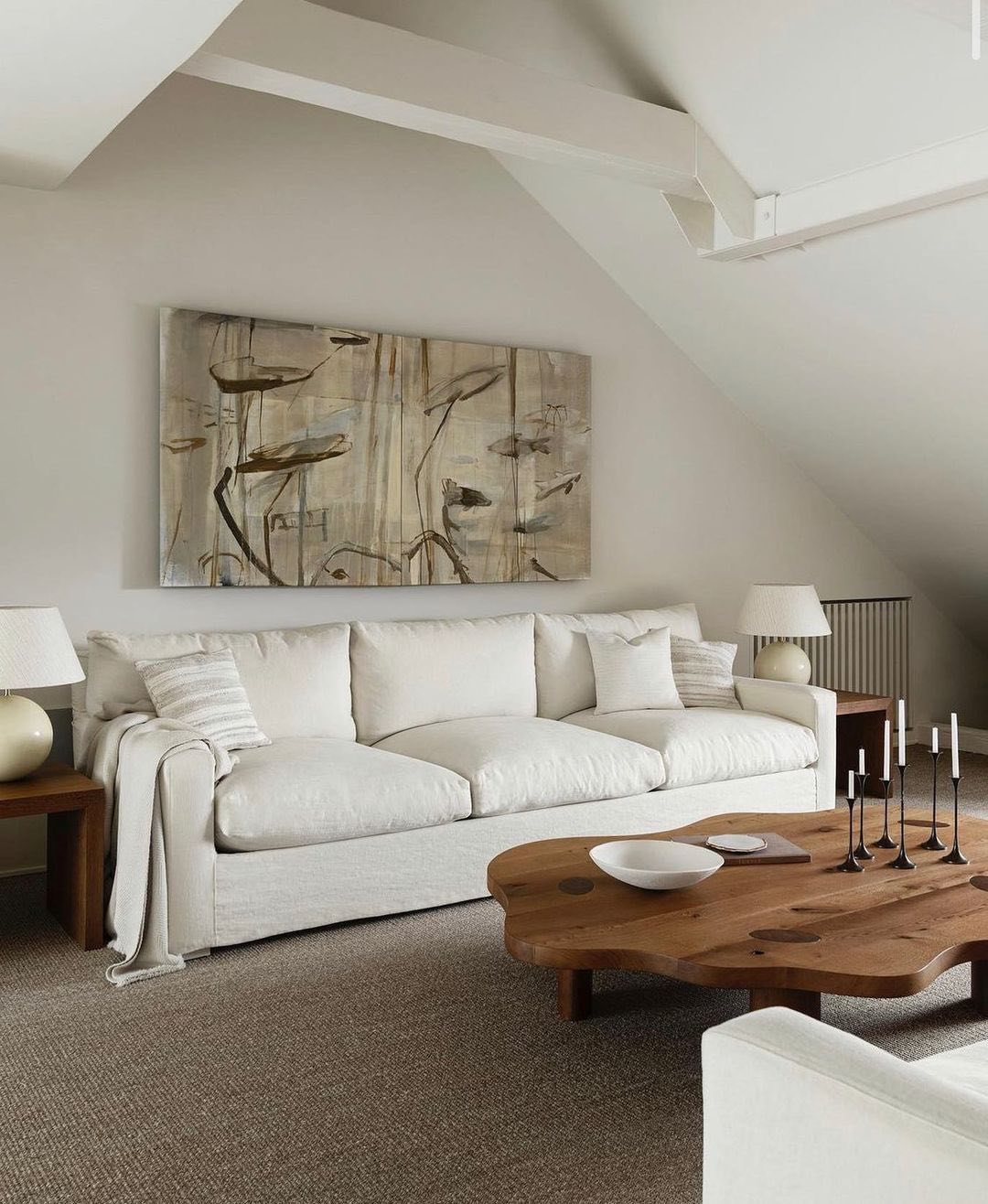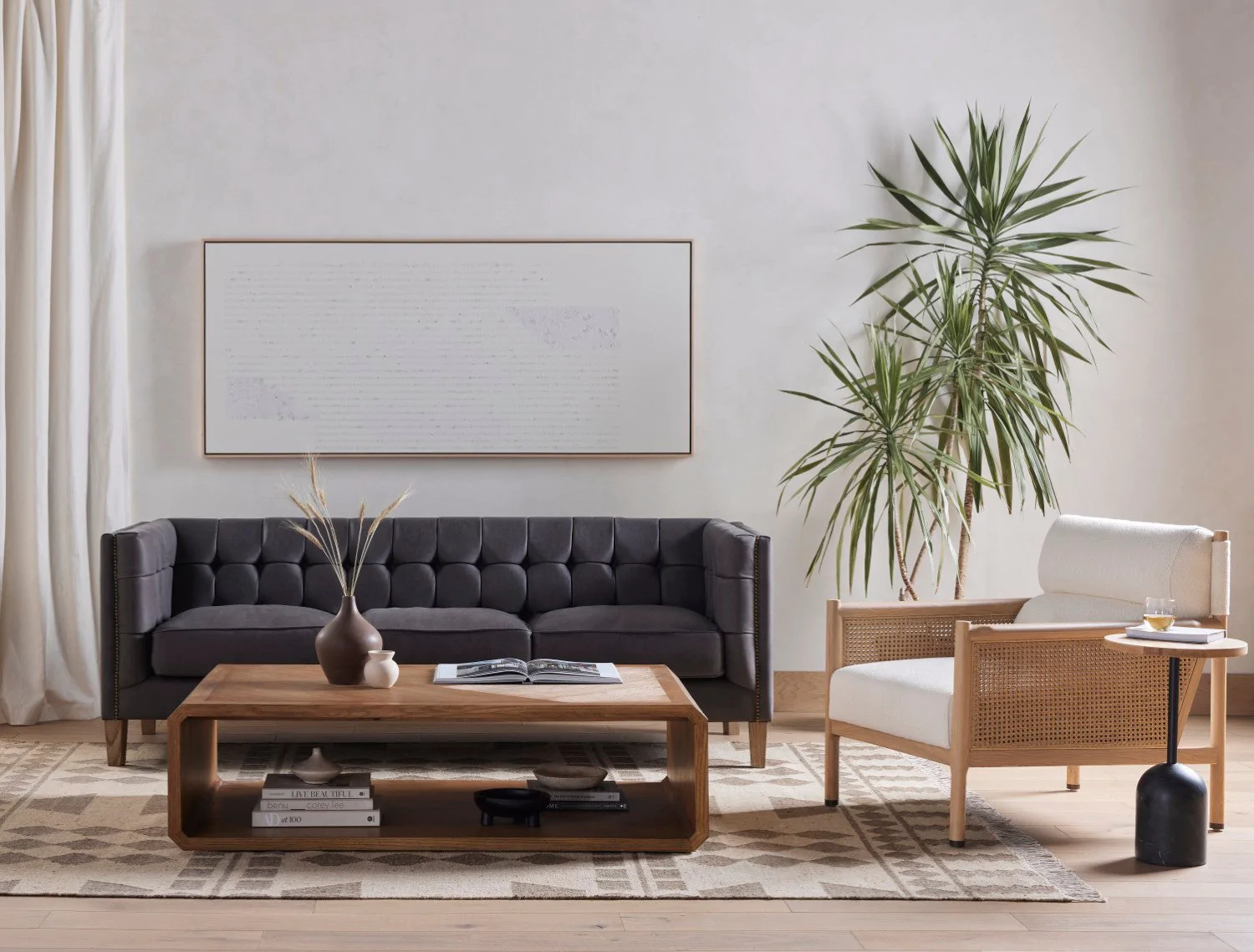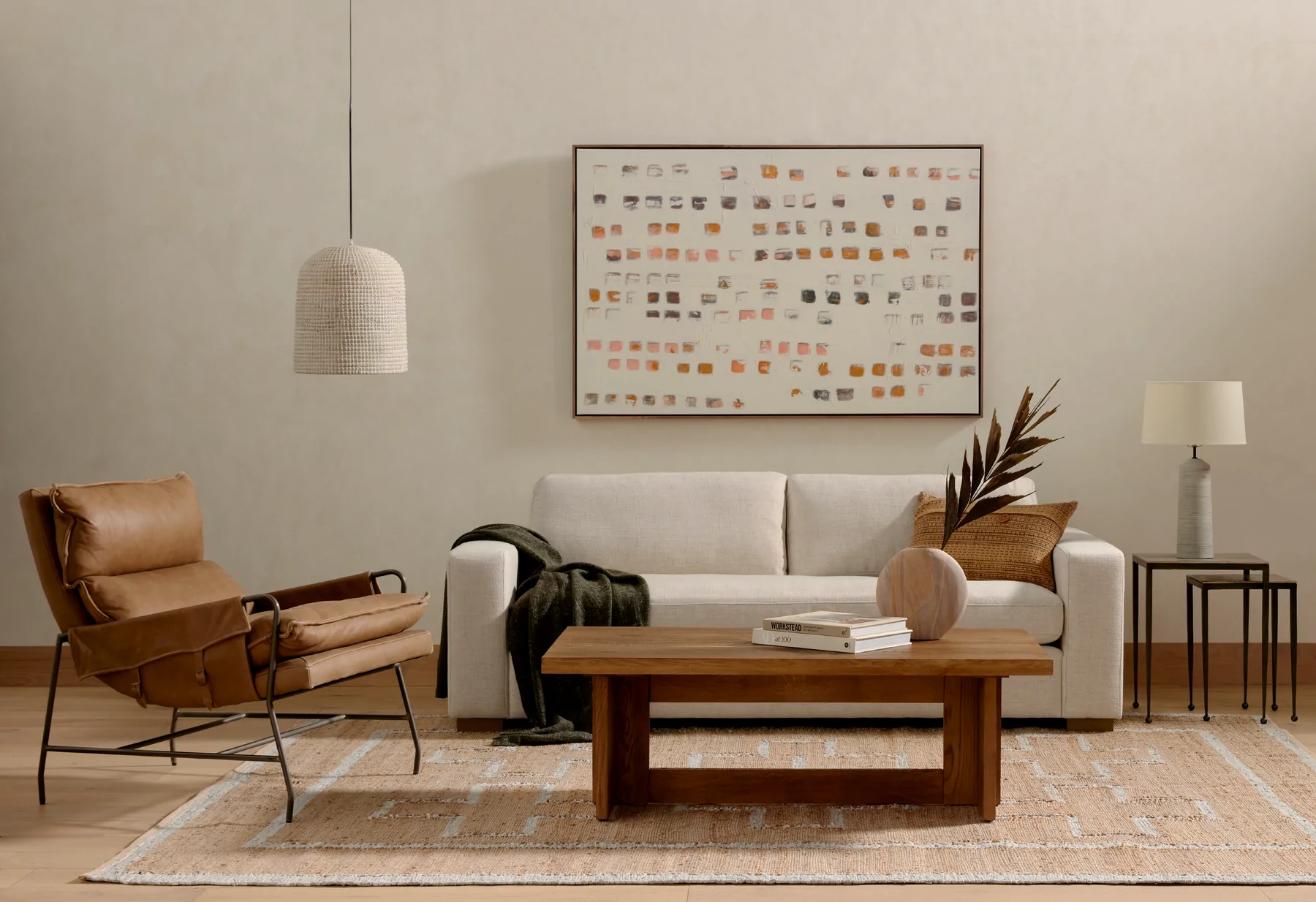
From Art to Life - "Minimalism"
Born in the late 1950s and 1960s in the United States, Minimalist art, mainly in painting and sculpture, advocates simplifying images with minimal color and images, erasing any traces of emotion and intuitive judgment. Such a style of art has influenced the way we live now. This article will explore the definition of minimalism, the reasons for the birth of minimalism, and the future direction of minimalism on our way of life, with the aim of unveiling the true face of minimalism that has been talked about in the world.
When I was visiting an art exhibition, I was confronted with an extremely simple and smooth model of a conceptual car of the future, and a child beside me stared with curiosity at a model with no wheels and no windows and asked his father, "This doesn't look like a car, why does it look like a box?" The father next to him replied carelessly, "It's called minimalism."
Coincidentally, a friend of mine got a new phone - iPhone 13 - and when I asked her why you like Apple products so much, she replied, "I just like Apple's minimalism."
I have heard this aesthetic concept many times, but what does it mean and what are its characteristics; what kind of environment led to the creation of minimalism; and what impact will such an aesthetic have on the future direction? These three questions have been lingering in the mind. "Appreciation is a casual commentary and conversation, a heartfelt admiration and intuitive commentary, while research does require a careful examination and observation of the original."
1.What is Minimalism
Wikipedia definition.
In visual arts, music, and other mediums, minimalism is an art movement that began in post-World War II Western art, most strongly with American visual arts in the 1960s and early 1970s.
It derives from the reductive aspects of modernism and is often interpreted as a reaction against abstract expressionism and a bridge to postminimal art practices.
It is worth noting that the common definitions found in most internet entries and books on aesthetic definitions are: 1) minimalism was born in the 1960s; 2) the aim is to pursue the ultimate simplicity of presentation; 3) in scope it is a style of life and art.
The term "Minimalism" first appeared in 1965 when the British philosopher Richard Woolham criticized artistic experiments that deliberately reduced the content of art in order to achieve aesthetic effects.
In this way, the definition of minimalism as "an extremely simple art trend", which is the same as that of the Orientalists, is somewhat justified, but not comprehensive. First of all, minimalism is not only simple, but also refined pure and essence. In the visual presentation is its silhouette is sharper, the lines are also more fluid, seemingly simple but sufficient to see the depth of meaning. Often people who like this style are fashionable but not untraditional, and live a refined life. For them, a single color, simple with warm or cold colors, should be clear and have a good integrity.
In the field of painting, minimalism advocates reducing the language of painting to the relationship between color and shape, simplifying the picture with very few colors and very simple shapes, discarding all unnecessary things that interfere with the subject. At the same time, the influence of Minimalism is not only in the field of painting, but also in music, literature and other art disciplines, where a large number of works have emerged under the influence of this trend.
In the field of music, the minimalist approach is mostly characterized by repetitive syllables with minimal variations, long periods of stillness, continuous murmurings, monotonous or very similar tonal shifts, and specific patterns for video game music or background music.
In the field of literature, minimalism is characterized by the economy of words, the reduction of ornate words in a straightforward manner, and the expression of such literature mainly in the form of loose genres, such as life ramblings, short essays, or even aphorisms or short sentences.
According to the analysis of art historians, minimalism is the end of modern art and the beginning of post-modern art. It should be said that the value and significance of Minimalism as an art trend that inherited from the previous one is undeniable, and it can also show from another aspect that Minimalism is not as simple as its name, but the cultural connotation it embodies had epoch-making significance at that time.
2.why minimalism was created
"To understand a work of art, an artist, a group of artists, one must correctly conceive the spirit and customs of the time to which they belong in general. This is the final interpretation of the artwork and the fundamental reason that determines everything." Thus, in the face of Minimalism, this still has to be said from the point in time of the origin of its birth: "art that began after World War II".
The two world wars of the 20th century were in fact not simply a great disaster in human history; flowers bloomed where there was ruin. World War II had a great impact on many aspects of the world economy, culture, art and thought. Among them, modernist ideas, after several twists and turns during the war, like sand and soil sharpening seeds, thrived and branched out into different branches, and Minimalism was one of them.
We try to look for its shoots breaking the ground from different fields of art.
In the field of literature, Heidegger said: "The essence of art is poetry. And the essence of poetry is the creation of truth." [⑤] The pursuit of pure poetry by means of refining words and other means has been pursued by artists. The classical Chinese aesthetics of "the great sound" and poetics of "not a single word, but the best style" both uphold the minimalist concept of creating more with less and more with one.
In the field of painting, the influence of Kandinsky's abstraction theory developed into Suprematism, which then spread from Moscow to Europe and America before evolving into Minimalism.
In the field of clothing, the pursuit of simplicity began in the Charnel era in the 1920s, and the American Costume Festival at the end of World War II, which emphasized practical skills and reduced flashy decorations, also became the ambush of the prevalence of minimalism in the field of clothing design.
In the field of sculpture, sculptors from the 1920s onward began to dissolve their interpretation of traditional religious themes, drawing inspiration from cold armored weapons and indifferent human nature, using pure three-dimensional structures and contrasts between light and shadow on geometric surfaces. The attempt expects the audience to have a continuous experience by looking around the work, and this experience constitutes the work itself, which depends on this continuous experience for its existence.
In the field of music, the single, repetitive, low sound of artillery fire becomes the source of inspiration for their compositions, using the cold, single sound of death on the battlefield as rhythmic material in music, and the timbral solos of different instruments to express the cries of different people, in order to awaken the deep-seated appeal for hope.
Kant said, "Beauty is universally pleasing without virtue of concept". The motivation for the birth of Minimalism has a lot to do with the pleasure people get from the "detachment" attitude of life.
In addition to the exploration of artistic categories, one can also dig deeper to analyze its birth from the point of view of the theory of the role of art.
In an era when the industrial revolution was advancing the course of history, when science and technology were paramount, when the explosion of ideas was embraced, artists began to think about the nature of art and to question it, so that the traditional theoretical system of art began to fall apart. The artists "needed to think about the roots of nature, to see where societies had left the eternal laws, the truth, the beauty, or where they were close to them. Minimalism is the result of artists who questioned the role of art.
It is important to mention that the minimalism we are talking about today is a way of life, in addition to artistic trends and stylistic designs. In the wake of the industrial revolution and the trend of consumerism in the Western capitalist world, the emergence of minimalism has greatly contributed to the consumption of commodities.
3.What kind of life minimalism will lead
"Behind every artistic activity lies the question of to what extent this world is in fact the world of man, to what extent he is able to affirm that this world is suitable for himself, his humanity." Whether it is a father who speaks out of turn about his children's education in an art museum, or a fellow student who avidly pursues apple design, looking around, our artistic creations are also influenced by minimalism: I see a double bed in a dormitory in the dance "Army Serenade" that represents the quiet and spiritual night talks of female soldiers with a point; I see the painting "Xiao Mi Jia Rifle" with a few strokes of two figures representing the vast I have seen the painting "Little Rice and Rifle", in which two characters represent the image of soldiers in a few strokes; and even the "tiktok" culture, which is now popular, with a video that distills a plot in just 15 seconds in a melody rich in emotion.
It can be said that minimalism has greatly influenced our lives today and even into the future. In the end, minimalism is most directly oriented to three things: saving your time, saving your energy, and saving your money. Around these three orientations, three characteristics of a minimalist-oriented lifestyle can be roughly summarized.
1.Having relatively few personal belongings.
To have fewer items, there are two ways: is to close the source and increase the flow. To close the source, many people are familiar with "if not necessary, do not increase the entity". Increasing the flow is a little more difficult. You may need to make some secret resolutions to get rid of things you haven't used for years. The only way to get rid of it is to donate it, resell it, or just throw it away. Maybe "never used" doesn't mean "useless", but since you don't use it, don't let it continue to occupy your space and your mind, just get rid of it! As you take more and more things out of your life and keep less and less, you will become more and more aware of what you really care about.
2.Reduce unnecessary notifications and interruptions in your life.
In the age of information explosion, simplify your sources of information is also very necessary. Of course, minimalism does not mean that you do not use social networks, it just means that you do not need to follow those strange accounts on social networks that never care, and do not let meaningless notifications appear on your phone. The point of minimalism is, suppose you turn off those push notifications, will the world stop spinning? Would you lose your job? Will it cause your family to not be able to find you when they are in a hurry? If not, cut it out.
3.Find the things in your life that really matter.
This goal doesn't seem easy, and even if you fully achieve the apparently minimalist life, this step is not so watertight. After all, life does not stop at simplifying items to reduce annoyances to reduce stress. After removing all the unnecessary clutter, you still have to find the things you really care about. We can have many choices: family, career, influence, friends, faith, beauty, helping others ...... are all good, and the focus of each person's choice may vary. But what is certain is that this what really matters is certainly not material things and consumption. What minimalism can do is to help you remove this thing that is likely to become a distracting item in your life, making it easier for you to find what you really want to find for yourself.
A famous person said, "Study more problems and talk less about isms." Personally, I understand that there is no good or bad doctrine, and that life does not depend on a certain doctrine to be happy, but that one can choose the future goal of life and the way of life by judging life itself. The characteristic of the happiness of the human heart is that "it does not take much thought and changes all the time".



